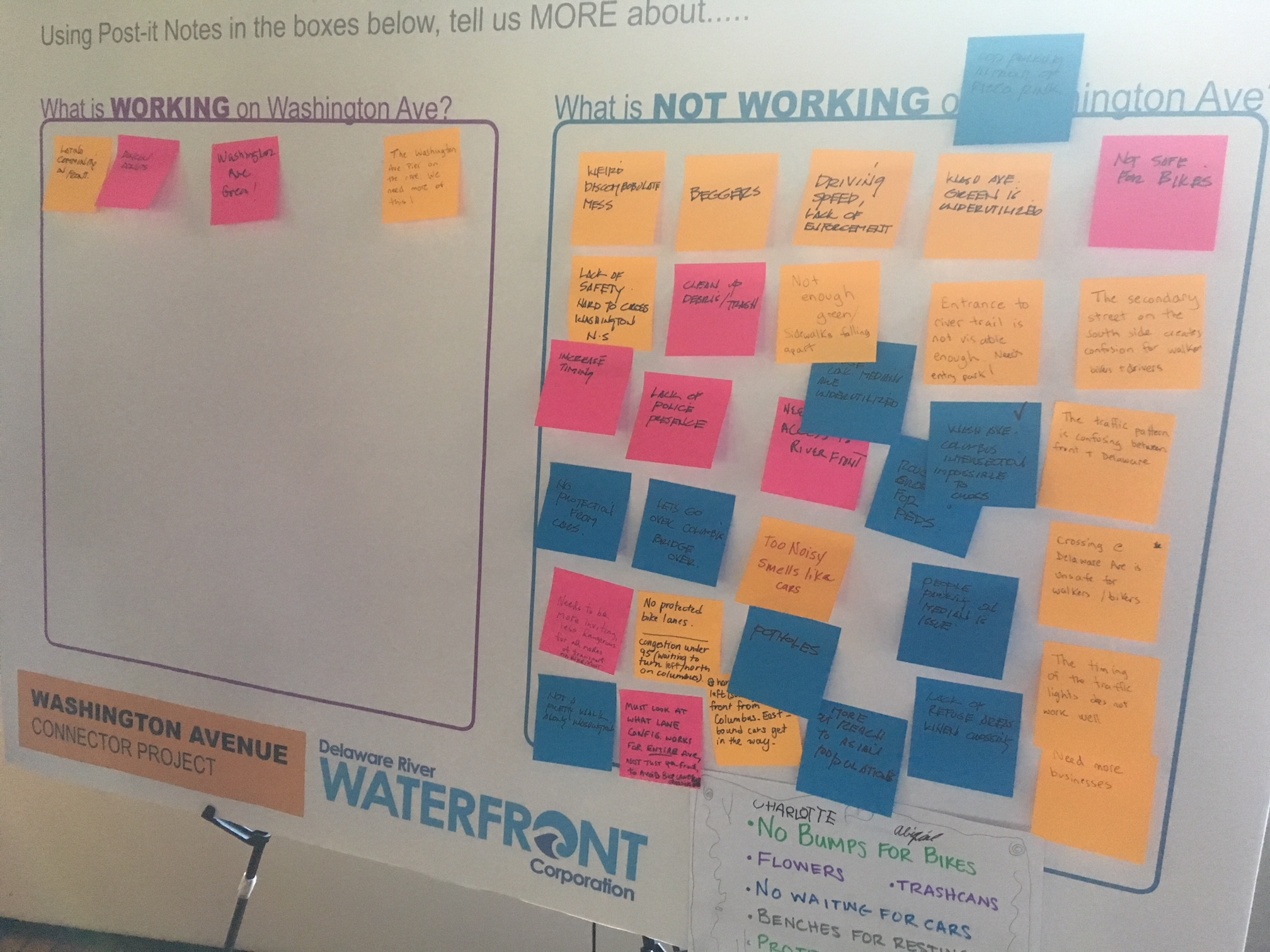Transforming Washington Ave. from a divider to a connector

Navigating parts of Washington Avenue can feel so daunting and dangerous, a pedestrian might envy the street’s namesake, who only had to cross a frozen river on his way to Trenton. Now, planners from the Delaware River Waterfront Corporation want to change that and turn the eastern end of this coldly indifferent streetscape into a welcoming “Connector Street” to the river General Washington actually traversed in 1776.
How to achieve that is the aim of a year-long planning project just launched by the DRWC, which hopes to begin construction on safety improvements and other upgrades to Washington Avenue between Fourth Street and the waterfront sometime in late 2019 or early 2020. But first, the agency wants to solicit feedback from neighboring residents and businesses, said Lizzie Woods, vice president of planning and capital projects.
“What we want to do now is just listen to people who experience this place and tell us what’s working and what’s not working about the traffic, about the infrastructure, about the uses, and how it can be made better,” Woods said.
In reimagining Washington Avenue, the agency aims to succeed where the Philadelphia City Planning Commission recently failed. A 2014 plan to redesign Washington Avenue by reducing it from five lanes to three, adding loading zones, adding parking spaces (by switching from parallel parking to back-in parking), and extending its bike lanes now collects dust. The Queen Village Neighbors Association and the Pennsport Civic Association opposed the proposal to remove lanes, fearing that would cause a never-ending traffic jam on the thoroughfare. Without the support of the local community groups, First District Councilman Mark Squilla never introduced the legislation necessary to authorize the realignment, and two years of planning withered on the vine.
This time, the DRWC has reason to believe its efforts will be more fruitful. For one, it is proposing changes to just the four blocks, said Woods. “This project, in taking a more concentrated view on one segment of [Washington Avenue] between Fourth Street and the waterfront, will allow us to, hopefully, not get as bogged down by all the different complications,” she said. “Washington Avenue from Columbus Boulevard to all the way over to the Schuylkill is a very complex and multidimensional space.”
Additionally, the changes the DRWC expects to propose at the end of this planning effort will likely be far less ambitious than the Planning Commission’s realignment plan. Similar DRWC “Connector Street” projects on Spring Garden and Race Streets resulted in new lighting, new signs, and sidewalk improvements, relatively modest upgrades compared to street redesigns.
A public meeting on the idea took place Monday evening at Gloria Dei (Old Swedes’) Church, an apt setting to begin plotting a more inviting Washington Avenue. Surrounded by that street, Delaware Avenue and I-95, Gloria Dei rises from rapids of traffic like a heavenly fortress, surrounded by red brick, Colonial-era walls and graced by a bucolic churchyard. Neighbors use the yard as an outdoor sanctum, a place for children to play and dogs to frolic.
The Washington Avenue Connector project aims to better link places such as Gloria Dei with other area amenities, like the DRWC’s Washington Avenue Green, the Mummers Museum, Jefferson Square, and Sacks Playground. “The goal is really to make Washington Avenue a connector instead of the barrier,” said Spencer Finch, project manager for Langan Engineering, which is leading the William Penn Foundation-funded project.
To do that, Finch added, they would look at reducing Washington Avenue’s “cluttered” signage and trying to make the area more pedestrian- and bicycle-friendly.
Perhaps influenced by the peaceful setting, those attending the meeting Monday seemed to agree with the idea of making this stretch of the avenue feel safer and more inviting.
“I think if people feel safer in the area, you’ll have more people move into the area, and check out the local businesses, and all that,” said Joe Jones, a Pennsport resident. “So I think it’ll be great for everyone.”
“I think it’s really exciting,” said Dorothy Jacobs, a West Philadelphia resident. “It’s a better way to access the river; the way it is now it is very uninviting.”
WHYY is your source for fact-based, in-depth journalism and information. As a nonprofit organization, we rely on financial support from readers like you. Please give today.



